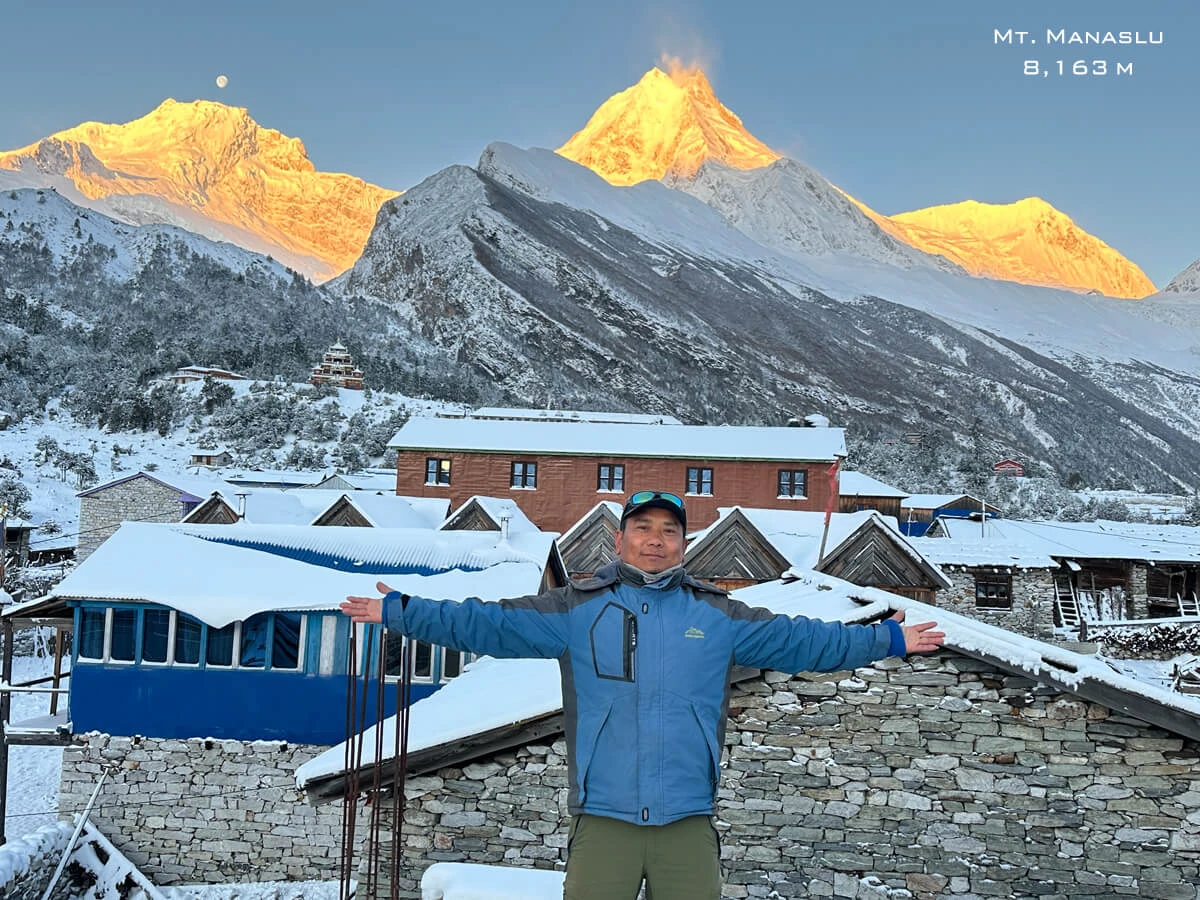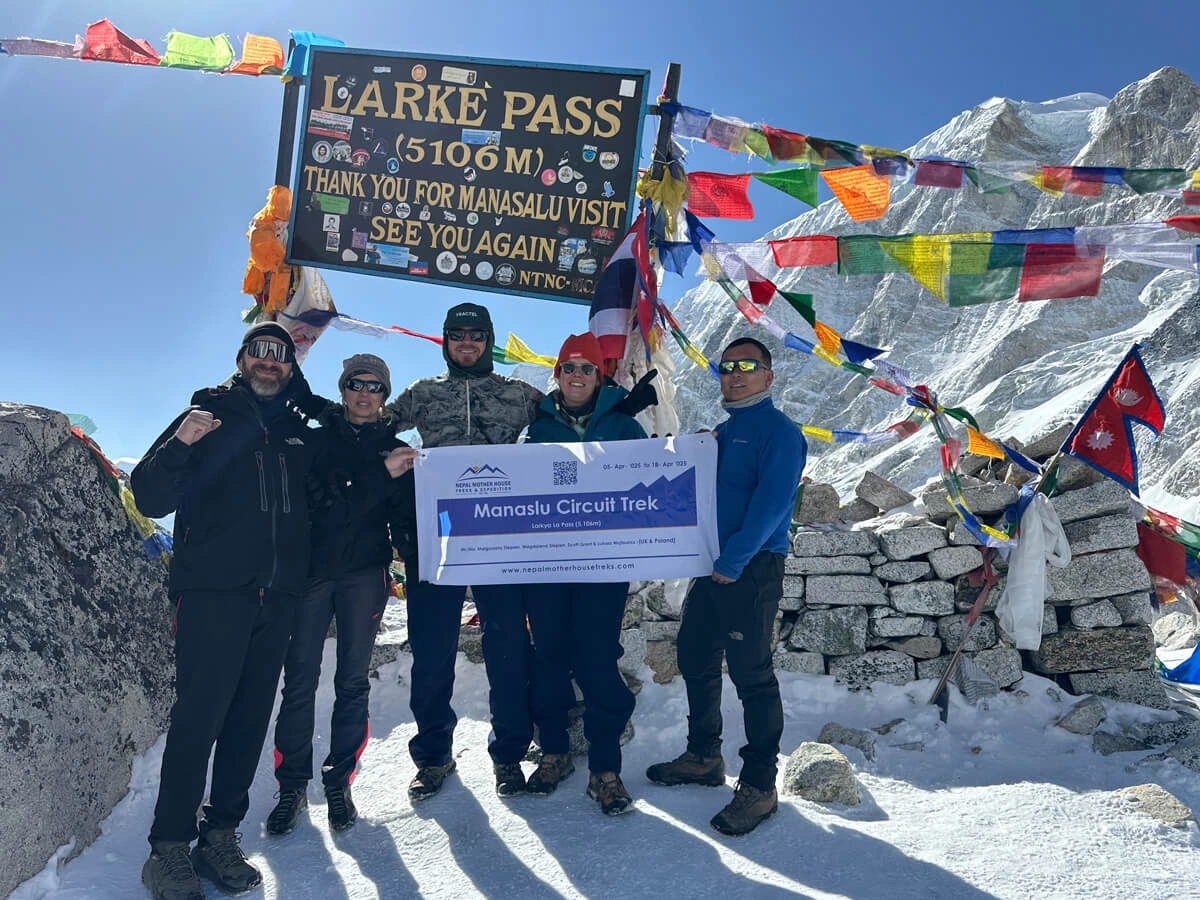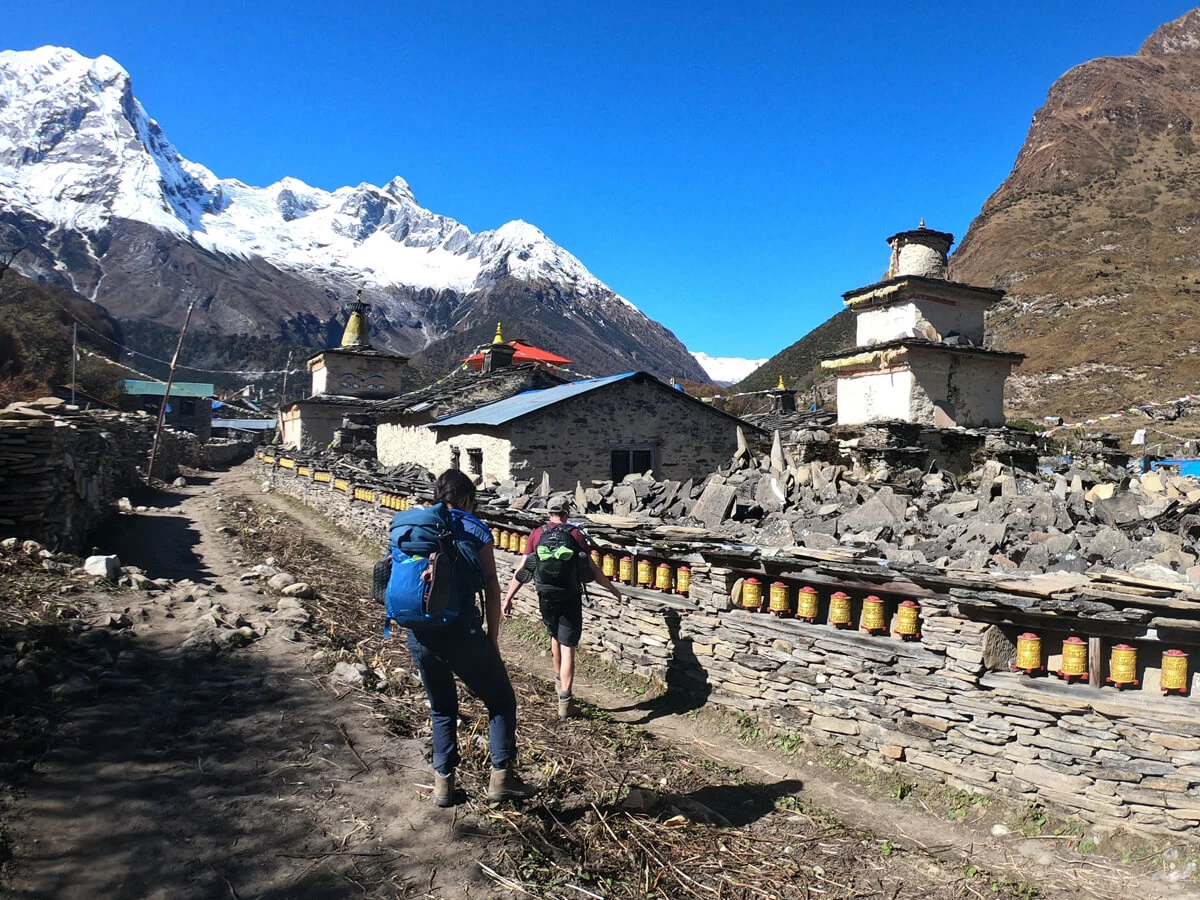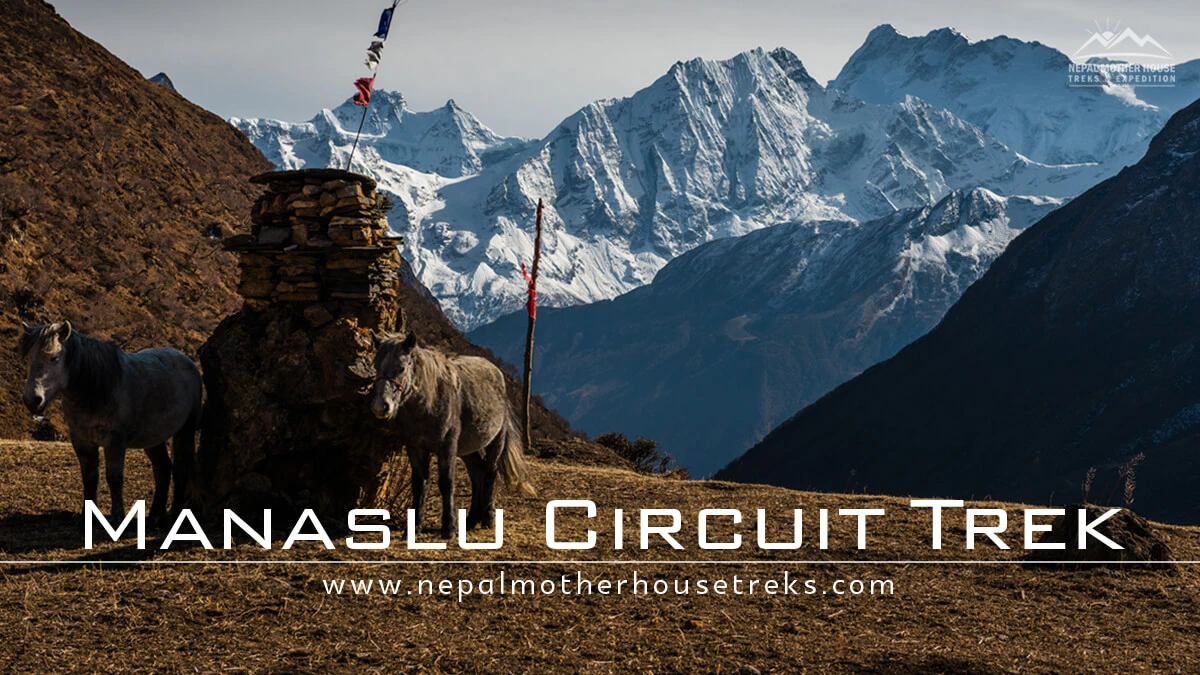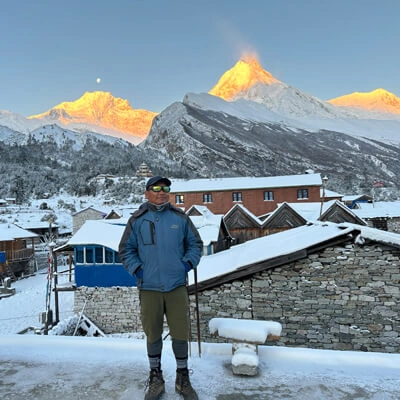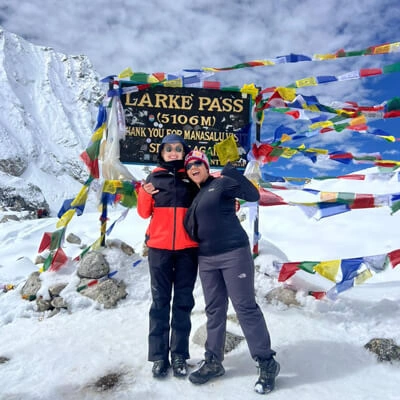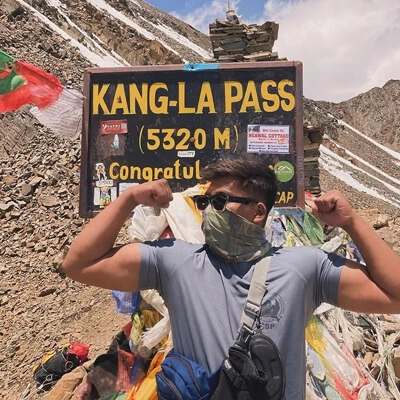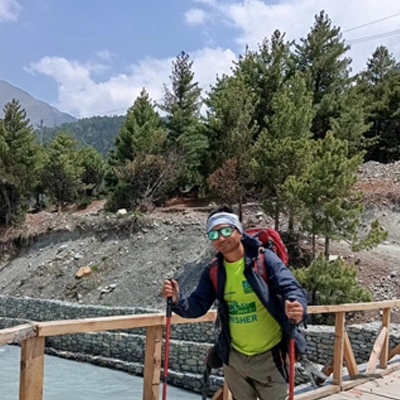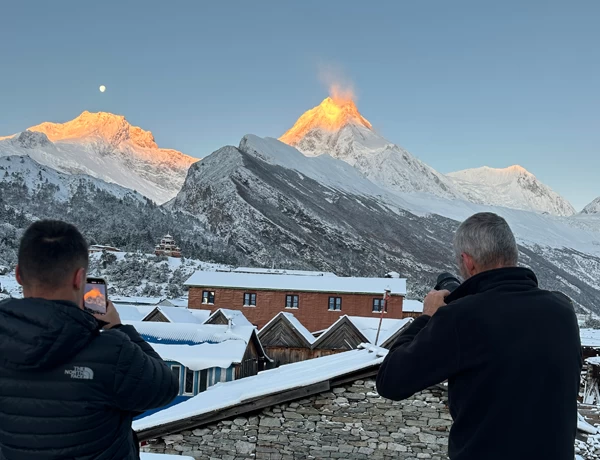Ultimate Manaslu Trekking gives you the chance to explore hidden treasures in the Himalayas. Since most hikers follow the same trekking path, you will not be able to avoid seeing the common things that everyone does. However, we will lead you on this trip to sacred locations that not many people have visited. Manaslu recently opened a teahouse trekking route in the remote Himalayas. The culture, tradition, and religious beliefs maintain Tibetan traditional values that no longer exist at this time.
Manaslu, a notched "wall of snow and ice hanging in the sky," is located in the northern Himalayan range in the Gorkha District of Nepal. Mt. Manaslu (8,163 m) is the eighth-highest mountain in the world with its beautiful shape. Apart from climbing, Manaslu is very popular for trekking in the wilderness area, a part of the Manaslu Larkya La Pass, a notable path in Nepal. There is a main two-part combination for the Ultimate Manaslu Trek: Tsum Valley and Manaslu Circuit. Due to its isolation behind the Himalayas and inaccessibility, this area and its people have been untouched by mainstream development for centuries. That’s why people's livelihoods and the culture of this valley have remained unique.
The people here are following Buddhism; every village has a fluttering colorful praying flag, Mane wall, Chorten, and Gumba from the early century. They worship Lord Gautama Buddha, Padmasambhava (Guru Rinpoche), and some Bodhisattvas (a person refers to a human being dedicated to the achievement of enlightenment for the sake of others.) Consequently, their custom mandates sending the second son and daughter to monasteries to become monks and nuns. Some households in Tsum Valley practice polyandry, a marriage system where women have multiple husbands at a time. This system is much better than a monogamous system to prevent the fragmentation of land and family property among the brothers.
Established in 1998, the Manaslu Conservation Area (MCAP) spans 1663 sq. km, rising from 600 m to the summit of Mt. Manaslu at 8,163 meters. This is a mixture of habitats for 33 species of mammals, 110 species of birds, 11 species of butterflies, and 3 species of reptiles. It conserves in a sustainable way approximately 2000 species of plants, 11 types of forests, and over 50 species of useful plants.
Ultimate Manaslu Trekking offers a variety of trip options through the beaten trail at Manaslu Restricted Area, as part of the newly developed Great Himalayan Trail. The trek begins at Arughat Bazaar in Gorkha, near Narsingh Dham in Salyantar, and ends two to three weeks later in Besisahar, the starting point of the popular Annapurna Circuit Trek. Nowadays, this trip can include tea houses or homestay basics, which help locals generate income and create job opportunities using local manpower and products.
Mostly, the trail follows an ancient salt trading route along the Budhi Gandaki river bank. The trail passes through rural villages such as Sotikhola, Khoralbesi, Machhakhola, and Dobhan, along with rice terraces, jungles, waterfalls, gorges, hills, stunning landscapes, and mountain views before arriving at Jagat, where you enter a restricted area. After crossing the Bhudhigandaki River, the trail ascends to the Philim village before heading to Tsum Valley, passing through Lokpa, Chumling, Chumchet, Chhekamparo, and Chhule Nele, before arriving at Mu Gompa (3,700 m). Tsum Valley has been open to tourists since 2008; you need special permission to visit. Tsum is a sacred valley with ancient monasteries, Chorten, and virgin natural beauty, not permitting hunting, fishing, or sacrifice. It is believed that the Buddhist saint Milarepa meditated in the caves of Lamagaun in the 11th century; still, we can see his holy footprint.
The valley also boasts some unique and historic monasteries, including Milarepa Piren Phu Cave, Raven Gumba, and Mu Gumba, which lie on a pretty plateau nestled in the lap of the valley, Gumba Lungdang (3,200 m); and Ganesh Himal Base Camp, situated at the base of a conical hill against the main slope of Ganesh Himal at an elevation of 4,800 meters. The majestic scenery of the Ganesh Himal, Sringi Himal, and Baudha Himal ranges transforms your journey into a slice of heaven. This Himalayan sanctuary is rich in ancient art, culture, tradition, and religion. The people here are of Tibetan origin and speak a unique dialect; they celebrate many festivals, such as Fanning, Saka Dawa, Dhachyang, Losar, etc. The culture and people's lifestyle here remain ancient Tibetan.
After visiting Tsum Valley, the trail follows an ancient salt-trading route along the Budhi Gandaki River (Yashodhara Nadi) bank and gorge at Pewa. Now you are on the Manaslu Circuit main trail, so there is more flow of trekkers, better accommodation, and more options for meals. You walk through the traditional villages at Deng, Ghap, Namrung, Lho Gaun, Samagaun, Samdo, Dharmashala, and Bhimtang via Larkya La Pass, at an elevation of 5,160 meters. Hike to Serang Gompa (3050 m) from Bihi Phedi, Visit Kal Tal/Kalchhuman Lake (3574 m) from Beautiful Prok Village, Himalchuli base camp (4,220 m), Hinang Gompa (3,100 m) from Lhi Village, Pung Gyen Gumba (3870 m) from Shyala, Manaslu base camp (4,400 m), Birendra lake from Samagaun, and Rui La Pass (4,998 m) -Tibet Border from Samdo are the main attraction of the Ultimate Manaslu Trek.
As you ascend higher, the mountain scenery becomes increasingly beautiful and charming. The ancient monastery, Chorten, and supa at Sama Gaun are incredible; people here follow Buddhism. Yaks, Jharal, Himalayan Thar, Musk Deer, Pika, etc. encounter some part of the trail. During the acclimatization day at Samagaun (the birthplace of the Mingyur Rinpoche"The Joy of Living" book), you may visit the Manaslu Base Camp (4,400 m) and Birendra Lake to talk with the expedition group. Finally, you will get to Dharapani following Dudh Khola, which is Annapurna Circuit Trip's main trail. You can then take a bus to Besisahar and Kathmandu or Pokhara on the same day. Or if you like to finish the trek at Besisahar, you can walk through the traditional trekking trail. Some individuals prefer to continue their journey to the Annapurna Round.
This is an unforgettable trip beyond the Himalayas, collecting a bunch of experiences for your lifetime. The natural beauty makes you vow to come back again with your friends and family. We at Nepal Mother House are glad to organize your 30-day Ultimate Manaslu Trek throughout the year with local expert guides and porters according to your holiday schedule and requirements. But March, April, and May are perfect for spring, and September, October, November, and December are the best times for this trip. Why not join us to explore the hidden treasure of the Himalayas? If this is too long a trek for you, then the Manaslu Circuit Trek can be done in 11 days, which is the shortest time for superfit trekkers, whereas the 14-day Manaslu Circuit is suitable for everyone who is going to do it for the first time. Likewise, the 18-day Manaslu Circuit and Tsum Valley Trek are best for exploring the sacred Tsun Valley and vibrant Manaslu Circuit, both parts of the Manaslu Trek.
Here is a complete guide to the Manaslu Circuit with the Tsum Valley Trek.
